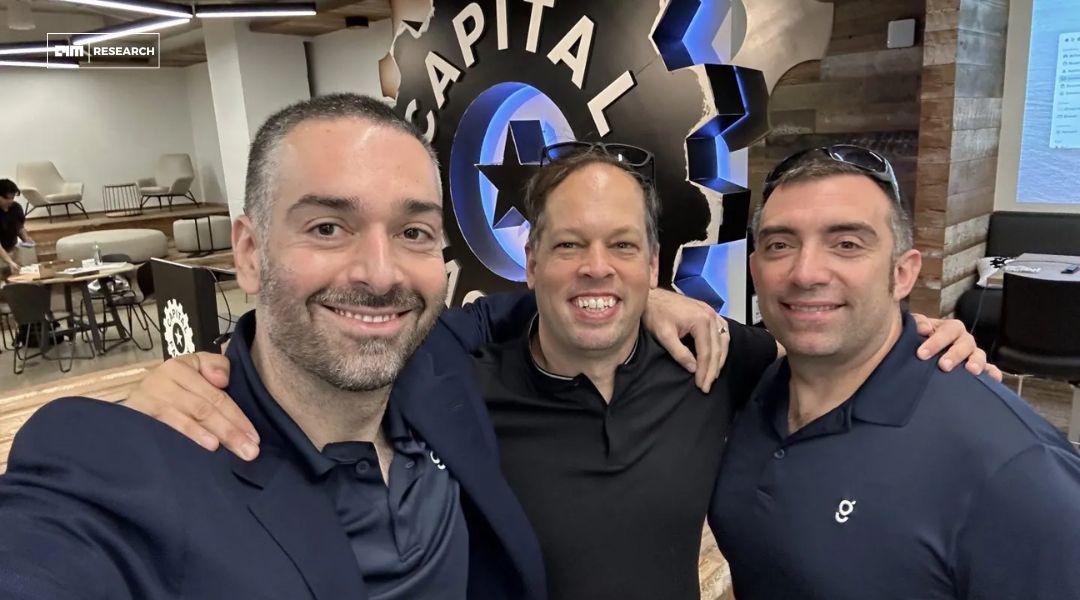
If AI Doesn’t Know Your Brand Exists Consumers Won’t Either Says Scrunch AI
- By Anshika Mathews
- Published on
If AI doesn’t know your brand exists, consumers won’t either. Simple as that.


For decades, businesses have lived and died by their ability to master search engine optimization (SEO). The rules were clear: rank higher in Google, get more clicks, drive more conversions. But that playbook is rapidly becoming obsolete. AI-powered assistants like ChatGPT, Gemini, Siri, and Google’s AI Overviews are upending the traditional search model. Instead of sifting through a list of blue links, consumers now receive synthesized responses compiled from multiple sources in seconds.
This shift represents an existential challenge for businesses that have spent years optimizing for Google’s algorithms. The new gatekeepers of information aren’t humans manually clicking through search results; they’re AI models that decide which content is relevant, which brands deserve visibility, and which businesses are effectively erased from the digital landscape. Scrunch AI, a startup dedicated to helping businesses understand, optimize, and improve how they appear in AI-driven search results.
Chris Andrew’s Lightbulb Moment
Chris Andrew, co-founder and CEO of Scrunch AI, didn’t need to analyze market trends or dig through research reports to understand that the search paradigm was shifting, he just had to look at his own behavior.
“I realized I was visiting fewer websites,” Andrew said. “I was expecting an answer from ChatGPT instead of 20 links from Google. Browsing is inefficient by definition, and if AI is doing that work for us, the entire customer journey will change.”
That realization set Andrew on a mission. Previously the Chief Product Officer at Hearsay Systems, he joined forces with CTO Robert MacCloy to launch Scrunch AI in November 2024. The company’s mission is straightforward: help businesses track and optimize their presence in AI-generated search results.
In just a few months, Scrunch AI has landed 25 enterprise customers, including Lenovo, BairesDev, and Penn State University. Investors have taken notice, too. The startup secured a $4 million seed round led by Mayfield, with support from prominent angel investors like Clara Shih (Hearsay Systems), TJ Parker (PillPack), and Bryant Chou (Webflow). The backing underscores the urgency with which businesses must adapt to the new AI-driven search reality.
Traditional SEO focuses on ranking higher in search engines, but AI search optimization requires a fundamentally different approach. AI models don’t just index websites; they synthesize content, cross-reference sources, and generate responses based on their interpretations of relevance and authority.
To navigate this complexity, Scrunch AI provides businesses with four key capabilities:
First, it continuously monitors how brands appear across AI search platforms, updating every three days to track content interpretations, competitive positioning, and sentiment analysis. This real-time tracking allows businesses to understand how AI models perceive and represent their brand.
Second, its Knowledge Hub helps businesses identify discrepancies between their own content, third-party data, and AI-generated responses, ensuring accuracy and mitigating misinformation. With AI models pulling information from various sources, maintaining control over brand representation has never been more critical.
Third, the platform provides insights into how AI engines process a company’s website, offering data-driven recommendations to improve visibility. AI search engines weigh different factors than traditional search algorithms, and Scrunch AI helps companies adjust their digital strategies accordingly.
Finally, Scrunch AI maps how AI agents interact with a brand across different touchpoints, giving businesses a clearer picture of how customers experience their products and services in an AI-driven world. By understanding these interactions, companies can refine their messaging and content strategies to align with AI preferences.
The implications of AI-driven search extend far beyond marketing strategy, they fundamentally alter the way consumers engage with brands. Instead of methodically comparing products or reading long-form reviews, customers are increasingly trusting AI-generated answers to make purchasing decisions. Gartner predicts that by 2027, nearly 50% of organic search volume will disappear as AI-generated answers replace traditional search results. Businesses that fail to adapt risk becoming invisible.
“Your brand is no longer just what you say it is,” Andrew explained. “It’s what you say, plus what third parties say, plus what AI models decide to present. Businesses need to monitor and influence these AI-driven narratives at scale.”
Consumers already trust AI more than most marketers would like to admit. Initially, AI chatbots were mocked for their bizarre, often incorrect answers—remember the viral stories of AI suggesting glue as a pizza topping? But those early blunders humanized AI, making it feel less like a sterile algorithm and more like a quirky assistant. Now, AI models are improving at an exponential rate, and people are increasingly willing to trust their outputs for everything from product recommendations to legal and medical advice.
“If I were a marketing leader at a large company, I would not bet against the models,” one executive recently remarked. “We’re already seeing that individuals are trusting these things, and where trust exists, that trust is going to grow.”
Scrunch AI is not alone in recognizing the urgency of AI-driven search optimization. Other companies, like Profound, are developing tools to track AI-generated search results. Traditional PR and marketing agencies, such as Avenue Z, are pivoting toward AI-focused search strategies.
But Scrunch AI differentiates itself by focusing on the entire customer journey, rather than just optimizing search rankings. The platform doesn’t just help businesses show up in AI-generated responses but it ensures they remain consistently represented across different AI ecosystems.
Moreover, Scrunch AI offers businesses a way to measure and enhance their AI visibility through large-scale A/B testing. By generating thousands of AI responses and analyzing content performance, companies can refine their digital presence to align with AI selection criteria.
For decades, search has been dominated by Google, with paid ads serving as the primary revenue model. But the rise of generative AI is shattering that monopoly. New players are emerging like Bing’s GPT-powered search, Perplexity AI, and even Apple’s rumored AI search initiative are reshaping the landscape.
“The fact that Google is putting an AI summary above their own ad placements tells you everything you need to know about where search is headed,” Andrew noted. “Bing is suddenly relevant again because GPT relies on it. Perplexity is a new player, and they need ad revenue more than anyone. Their ad prices are 10 to 20 times higher than traditional search providers because by the time a user clicks, they’re already deep in the purchase funnel.”
He predicts that in the near future, we won’t just have two dominant search engines. “I think we’ll see five to ten core search providers emerge. And distribution is going to be a huge question—Apple partnering with GPT means their model will play a role, too. The landscape isn’t shifting in five years—it’s shifting in six months.”
For businesses, ignoring AI is no longer an option.
“Your best customer is an AI bot,” Andrew said. “If AI doesn’t know your brand exists, consumers won’t either. Simple as that.”
This means companies must fundamentally rethink how they present information. AI bots aren’t watching TV commercials or scrolling social media. They’re ingesting structured, well-organized data. Businesses that fail to adapt risk being excluded from AI-generated recommendations entirely.
So what’s the first step? According to Andrew, it’s simple:
“Go search for your brand in AI models. See how you’re being represented. Are there gaps? Inaccuracies? Fix them. Then start testing—tweak snippets, titles, content formats. Measure the impact and keep iterating.”
Because in the world of AI-driven search, standing still is the same as disappearing.
📣 Want to advertise in AIM Research? Book here >
Cypher 2024
21-22 Nov 2024, Santa Clara Convention Center, CA
A Vendor Briefing is a research tool for our industry analysts, and an opportunity for a vendor to present its products, services and business strategies to analysts who cover the vendor specifically or a related technology or market.
AIM Research encourages technology vendors and agencies to brief our team for PeMa Quadrants, when introducing a new product, changing a business model, or forming a partnership, merger, or acquisition.


